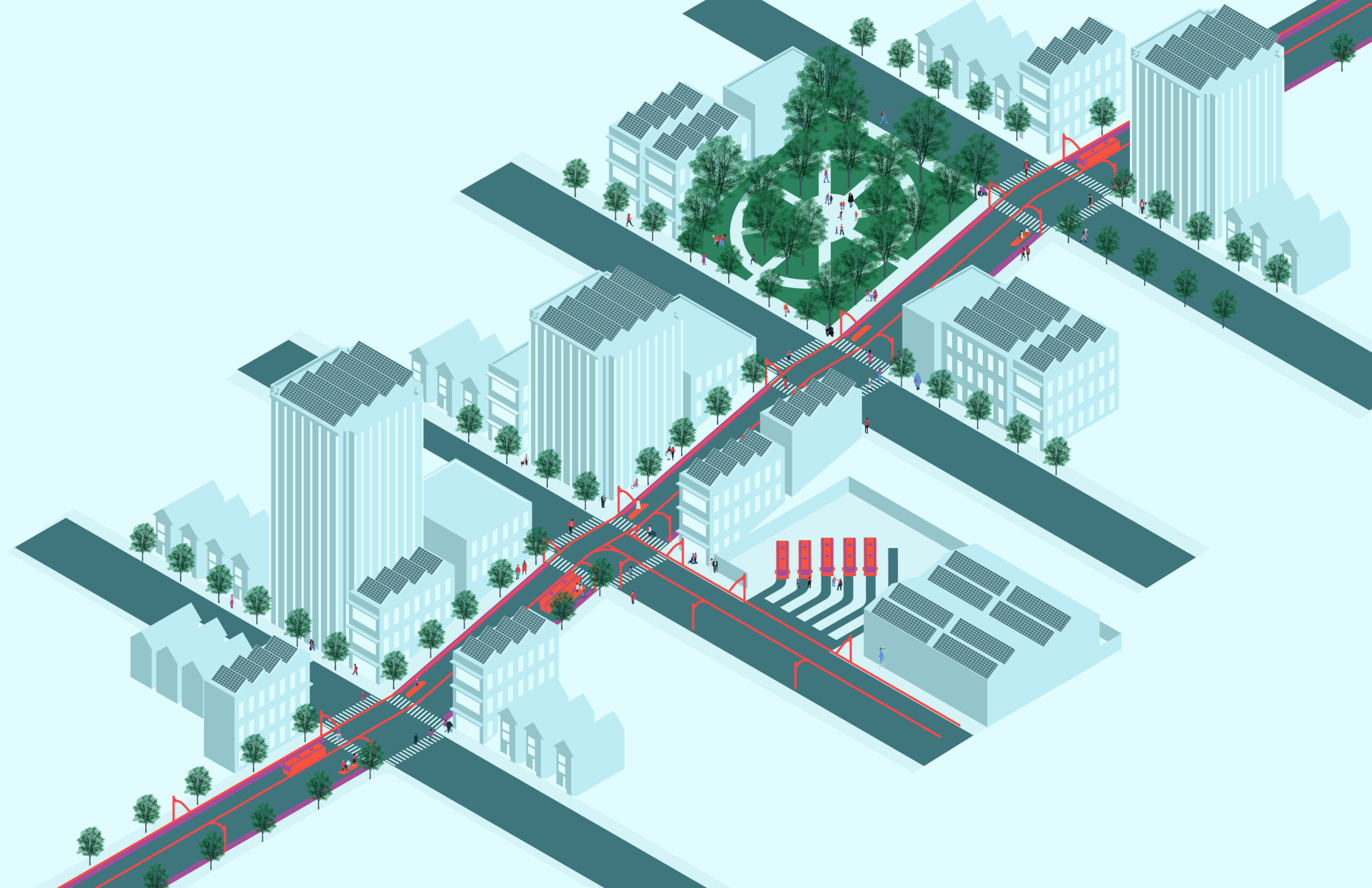New Report: Trolleybuses Well Positioned to Efficiently Decarbonize San Francisco
According to new research, San Francisco Municipal Transportation Agency’s existing In-Motion Charging Trolleybuses are a crucial resource for swiftly decarbonizing the public fleet.
JULY 12, 2023 – A technical study released today, “San Francisco Muni Electrification Alternatives Analysis,” shows that maintaining and expanding San Francisco’s trolleybus fleet with In Motion Charging (IMC) technology could be the fastest and most efficient way to decarbonize the San Francisco Municipal Transportation Agency’s (SFMTA) system. The study provides strong evidence that compared to battery buses, leveraging the City’s existing trolley infrastructure is the cheaper, more resource efficient, and better-suited option to decarbonize the fleet and take diesel off the streets.
Key findings include:
- A 33 percent increase in overhead line infrastructure would allow San Francisco to more than double its fleet of zero-emission buses while adding 210 miles of electrified service.
- Utilizing battery electric buses would require 18 percent more buses than using IMC trolleybuses.
- Incorporating next-generation IMC technology would improve the overall trolley system’s energy efficiency and reduce the transit system’s overall environmental footprint.
IMC trolleybuses, unlike the SFMTA trolleybuses currently in service, do not need overhead wires for the majority of their route and are equipped with small batteries to get them up to 20 miles between overhead line connections. In comparison, battery electric buses have significantly larger battery banks taking up space that otherwise could fit riders and yet cannot make it through full shifts without charging. The battery banks on IMC trolleybuses are smaller than battery electric buses, saving space in the bus for more riders, and the wires allow them to intermittently charge throughout their route. In the switch from diesel to electric, investing in the IMC trolleybus system is a clear answer.
“Our analysis shows that San Francisco’s trolley system is a key tool for electrifying its buses quickly and economically,” said Andrés Emiro Diez Restrepo, Research Professor, Universidad Pontificia Bolivariana. “Electrifying San Francisco’s diesel routes via IMC trolleybuses will undoubtedly be an important benchmark to inspire other cities.”
Not only are IMC trolleybuses efficient, there is a well-trained, incumbent workforce poised to expand the fleet’s electrification. “The International Brotherhood of Electrical Workers is proud to have been at the forefront of electric transportation in San Francisco since it was first introduced over 125 years ago,” said IBEW Local 6 Business Manager John Doherty, “this report shows that leveraging our overhead line system to electrify SFMTA’s bus fleet is not only the most practical way to eliminate transit-related diesel exhaust as soon as possible, but is also fiscally responsible to taxpayers and riders.”
There are also clear global justice implications for a system that can operate with smaller batteries like IMC trolleybuses. Batteries require the extraction of transition minerals including lithium and cobalt – processes that can have negative impacts on environmental and human health. “We see exciting potential in the expansion of a IMC trolley fleet in San Francisco and elsewhere in order to ensure that the energy transition is as just as possible across the supply chain,” said Johanna Bozuwa, Executive Director at the Climate and Community Project.
Across the world, public transportation systems need to switch from diesel-fueled fleets to electrified, clean transportation to achieve our decarbonization goals. Switching to an electrified fleet– especially one with less material impact like batteries – will provide cleaner water, air, and communities not only for the people where the buses are driving, but for those up the supply chain. “We are proud to have supported this research,” described Natalia Ortiz at Metro de Medellín, “the work helped to refine our own system in Medellin and assist other transit agencies.”
“Transit agencies across the world are expanding trolleybus operation thanks to innovative IMC technology. This allows the high energy efficiency and reliable performance of the electric grid to be extended to many other routes at a relatively low cost,” said Martin Wright, Consultant to UPB and international trolley advocate.
San Francisco is at a crossroads for its decarbonization. “Does it mothball a crucial part of its electrified fleet or invest more deeply in a proven technology with 85+ years of successful transit service and an existing workforce and infrastructure?” John Doherty answered the question directly “San Francisco’s existing overhead line system is an invaluable resource that SFMTA should exploit fully as it electrifies its fleet.”
The research was conducted by an international network of experts including researchers from the Universidad Pontificia Bolivariana, Universidad del Norte, and Metro de Medellín in collaboration with the International Brotherhood of Electrical Workers Local 6, the San Francisco Electrical Construction Industry (SFECI), and the Climate and Community Project (CCP).
Read the Report: https://www.climateandcommunity.org/trolleybus-decarbonization
###
